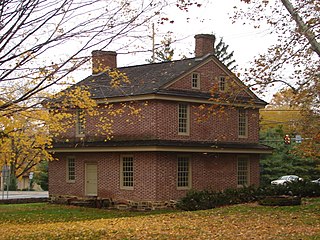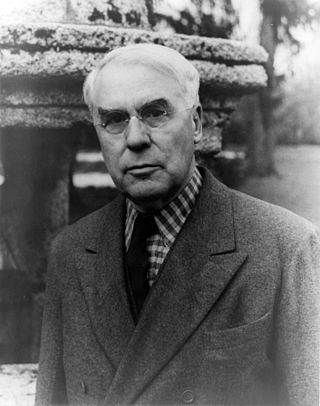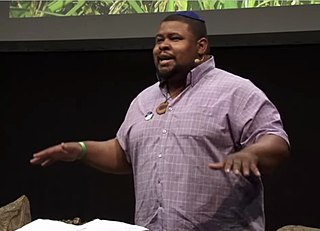
Penndel is a borough in Bucks County, Pennsylvania, United States. The population was 2,328 at the 2010 census.

Newtown Township, also referred to by the name of its post office of Newtown Square, is a township in Delaware County, Pennsylvania, United States. Prior to 1789, it was part of Chester County. As of the 2020 census, the population was 15,002.

New Freedom is a borough in York County, Pennsylvania, United States. As of the 2020 census, the borough had a population of 4,874. Once an industrial/railroad town, the community has evolved into a predominantly residential community.

John Bartram was an American botanist, horticulturist, and explorer, based in Philadelphia, Pennsylvania, for most of his career. Swedish botanist and taxonomist Carl Linnaeus said he was the "greatest natural botanist in the world." Bartram corresponded with and shared North American plants and seeds with a variety of scientists in England and Europe.

Seed companies produce and sell seeds for flowers, fruits and vegetables to commercial growers and amateur gardeners. The production of seed is a multibillion-dollar business, which uses growing facilities and growing locations worldwide. While most of the seed is produced by large specialist growers, large amounts are also produced by small growers that produce only one to a few crop types. The larger companies supply seed both to commercial resellers and wholesalers. The resellers and wholesalers sell to vegetable and fruit growers, and to companies who package seed into packets and sell them on to the amateur gardener.

Green beans are young, unripe fruits of various cultivars of the common bean, although immature or young pods of the runner bean, yardlong bean, and hyacinth bean are used in a similar way. Green beans are known by many common names, including French beans, string beans, and snap beans or simply "snaps." In the Philippines, they are also known as "Baguio beans" or "habichuelas" to distinguish them from yardlong beans.

Washington Atlee Burpee was the founder of the W. Atlee Burpee & Company, now more commonly known as Burpee Seeds.

An heirloom plant, heirloom variety, heritage fruit, or heirloom vegetable is an old cultivar of a plant used for food that is grown and maintained by gardeners and farmers, particularly in isolated or ethnic minority communities of the Western world. These were commonly grown during earlier periods in human history, but are not used in modern large-scale agriculture.

Burpee Seeds and Plants, officially W. Atlee Burpee & Co., is an American seed and plant company that was founded by Washington Atlee Burpee in Pennsylvania in 1876.

The Landis Valley Village & Farm Museum is a 100-acre living history museum located on the site of a former rural crossroads village in Lancaster, Pennsylvania. Founded by brothers Henry K. Landis and George Landis in 1925 and incorporated in 1941, it is now operated by the Pennsylvania Historical and Museum Commission. Its staff and volunteers collect, conserve, exhibit, and interpret Pennsylvania German material, culture, history and heritage from 1740 through 1940.

Bartram's Garden is a 50-acre public garden and National Historic Landmark in Southwest Philadelphia, Pennsylvania, situated on the banks of the Tidal Schuylkill River. Founded in 1728 by botanist John Bartram (1699–1777), it is the oldest botanical garden to survive in North America. The Garden is operated by the non-profit John Bartram Association in coordination with Philadelphia Parks and Recreation.
Seed Savers Exchange, or SSE, is a non-profit organization based near Decorah, Iowa, that preserves heirloom plant varieties through regeneration, distribution and seed exchange. It is one of the largest nongovernmental seedbanks in the United States. The mission of SSE is to preserve the world’s diverse but endangered garden heritage for future generations by building a network of people committed to collecting, conserving, and sharing heirloom seeds and plants, and educating people about the value of genetic and cultural diversity. Since 1975, Seed Savers has produced an annual yearbook of members’ seed offerings, as well as multiple editions of The Garden Seed Inventory, and The Fruit, Nut and Berry Inventory. SSE also publishes Seed to Seed: Seed Saving and Growing Techniques for Vegetable Gardeners. The nonprofit has sold seeds to about 600 retail stores in the United States and Canada.

Albert Coombs Barnes was an American chemist, businessman, art collector, writer, and educator, and the founder of the Barnes Foundation in Philadelphia, Pennsylvania.
Southern Exposure Seed Exchange (SESE) is a cooperatively-owned seed company. SESE is a source for heirloom seeds and other open-pollinated (non-hybrid) seeds with an emphasis on vegetables, flowers, and herbs that grow well in the Mid-Atlantic region. SESE also supports seed saving and traditional seed breeding through their product line, through lectures and workshops, and by working with over 50 small seed-growing farmers in the Mid-Atlantic and other parts of the United States. SESE publishes an intermittent email newsletter and blog for gardeners, as well as the Southern Exposure Seed Exchange Catalog and Garden Guide.

David Burpee was a seedsman and president of the W.A. Burpee Company from 1915 until 1970. He was known for his experimentation and hybridization of vegetables and flowers that were for the general population.

Pear tomato or teardrop tomato is the common name for any one in a group of indeterminate heirloom tomatoes. There are yellow, orange, and red varieties of this tomato; the yellow variety being most common. They are generally sweet, and are in the shape of a pear, but smaller. They are heirlooms and have 3 common other names, such as the "Red/Orange/Yellow Pear Tomato Plants."

David Landreth School is a historic school building located in the Point Breeze neighborhood of Philadelphia, Pennsylvania. It was built in 1889 after the original school caught fire.
Siberian tomato is a type of the common tomato plant. It is referred to as "Siberian" because it can set fruit at 38 °F (3 °C), although it is not particularly frost hardy, despite its name.

Michael W. Twitty is an African-American Jewish writer, culinary historian, and educator. He is the author of The Cooking Gene, published by HarperCollins/Amistad, which won the 2018 James Beard Foundation Book Award for Book of the Year as well as the category for writing. The book was also a finalist for The Kirkus Prize in nonfiction, the Art of Eating Prize and a Barnes and Noble New Discoveries finalist in nonfiction.


















